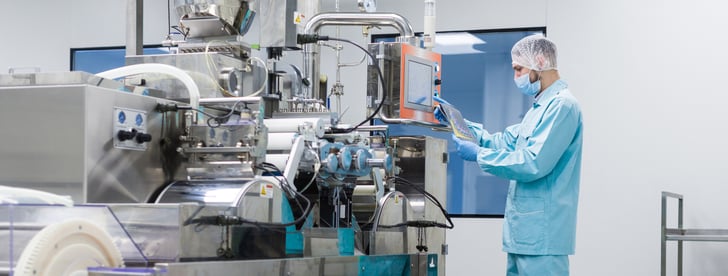June 29, 2017 | Food and Beverage
Minimizing Risk of Food Safety Problems in the Processing Industry
 The modern consumer demands that food products be free from harmful contaminants that could lead to illness. Growers, shippers, retailers, wholesalers, and restaurants are all required to ensure there are no food processing safety mistakes.
The modern consumer demands that food products be free from harmful contaminants that could lead to illness. Growers, shippers, retailers, wholesalers, and restaurants are all required to ensure there are no food processing safety mistakes.
To take this a step further, consumers have demonstrated that they will hold every food supplier in the supply chain accountable for foodborne illness. In addition to the public health impact, foodborne illness is extremely costly to the food industry. Therefore, it is critical to eliminate any food safety issues from the processing industry.
The following is a list of how to minimize food processing safety mistakes.
Good Manufacturing Practices
According to the Code of Federal Regulations (CFR), Good Manufacturing Practices (GMPs) are the controls, equipment, facilities and methods of producing processed foods. The goal of GMPs is to create the minimum sanitary and processing requirements for the production of safe food for consumption. These are critical to regulatory control and help eliminate food processing safety mistakes.
The best food processing companies closely implement GMPs which should be used in conjunction with quality standards and inspection requirements as well as on the production line and throughout the entire manufacturing facility.
Hazard Analysis Critical Control Points
The Food and Drug Administration (FDA) created Hazard Analysis Critical Control Points (HACCP) for the food processing industry to mitigate many food processing safety mistakes. The HACCP system requires food makers to follow seven principles:
One: Analyze the Hazards
The first step is to analyze any hazards that could enter the food, including chemical, microbial or bacterial such as metal fragments or glass. The main hazards that can occur stem from contact-surface hazards, overhead hazards, proximity hazards, transfer hazards and environmental hazards.
Contact-surface hazards focus on what is touching the product. Overhead hazards result from the build-up of contaminants that fall onto the product. Proximity hazards are guide rails and sidewalls that can touch the product. Transfer hazards occur from contamination transferred from structural elements. Environmental hazards come from the air or the water.
Two: Identify the Critical Control Points
Next, create critical control points where the food safety mistakes can be eliminated or controlled during the manufacturing process such as cooking, cooling, packaging or metal detection.
Three: Create Preventative Measures using Critical Limits
Then, create preventative measures with critical limits at each control point within the manufacturing process. For instance, during the cooking process, establish minimum cooking times and temperatures.
Four: Establish Procedures to Monitor those Control Points
Next, generate procedures for the monitoring of each control point. For example, the procedure may include determining how the cooking time and temperature are monitored.
Five: Generate Corrective Actions when a Critical Limit has Not Been Met
If one of the control points falls out of the set limit, create corrective actions as to how it can be resolved safely. For instance, if the minimum temperature is not met during the cooking process, the food could be discarded or reprocessed.
Six: Create Procedures to Verify the System is Intact
Then, create procedures that verify the system is operating smoothly. For instance, the required time and temperature could be randomly tested to ensure the cooking unit is functional.
Seven: Establish a Record-Keeping System
Finally, create an effective record-keeping system which includes records of the hazards and the monitoring of safety requirements.
Contracts
In addition to the in-processing requirements that help eliminate food processing safety mistakes, it is also critical to ensure your suppliers are following the same set of rules. This can be enforced through incoming quality checks and by contractually requiring the suppliers to implement safe food handling practices; which lowers the risk of food processing safety mistakes.
If an issue does arise, the contract will cover you as the buyer in that the supplier is liable for the failure of the food. Also, you can require the food supplier to purchase insurance coverage to financially cover the risks. You can even take the coverage a step further and require the supplier to name your company on its policies. This covers all parties in the instance of a food recall or illness resulting from food processing safety mistakes from your supplier.
In general, to avoid any foodborne illness outbreaks, every aspect of the food supply chain must diligently follow GMPs and safety practices to provide the safest food to the consumer. Unsanitary practices put your consumers and your business at risk.
Therefore, to protect the consumer from illness and your company from financial instability, you and your food suppliers must take the adequate steps to mitigate potential illness and other risks that could impact the quality of your food production.

